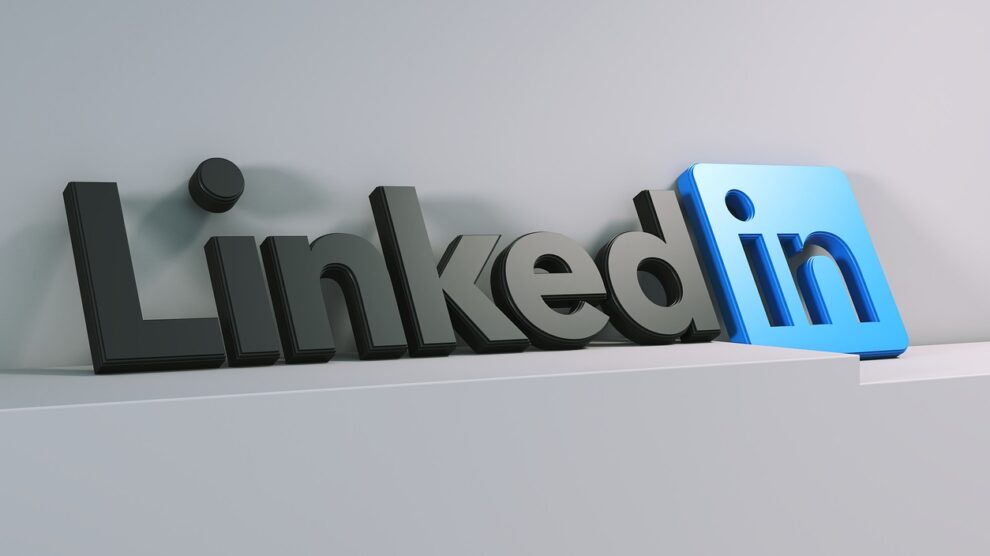Many describe LinkedIn as an online version of your business card. However, unlike a traditional business card, LinkedIn is a targeted marketing platform that is designed to connect you with your ideal clients.
LinkedIn is also a great tool for landing new clients. You can network with people you already know, see who they know, and invite them to connect.
Now that you know LinkedIn is a great place for prospecting, let’s look at how to actually use it.
1. Optimize Your Profile
First impressions are extremely important, and your profile on LinkedIn is no exception.
First, make sure your profile is professional. This means using a professional headshot, writing a concise summary, and including keywords.
For keywords, check out your LinkedIn recommendations and endorsements. These will give you an idea of what types of things clients are saying about your services. Then, incorporate them into your profile.
2. Use Groups to Find Clients
LinkedIn Groups are a great place to meet and connect with potential clients. There are groups for every type of business and industry. Search for groups related to your area of specialization.
Once you find a relevant group, start contributing. Answer questions, comment on posts, and start a conversation.
Over time, you’ll build a reputation for being knowledgeable, and people will start to recognize your name.
3. Use the LinkedIn Premium Features
LinkedIn Premium is the paid version of LinkedIn. However, it also includes features that can help you grow your brand.
One feature, in particular, is InMail. InMail allows you to send personalized messages to people who match your targeted search. With a basic LinkedIn account, you can only send messages to people in your network.
With LinkedIn Premium, you can target your ideal clients, and send them messages directly, regardless if they are in your network or not. LinkedIn guarantees higher response rates with InMail so it’s definitely worth checking out.
4. Use the Power of LinkedIn Ads
LinkedIn’s Sponsored Content and Text Ads are another paid feature that can greatly expand your reach and increase your visibility.
LinkedIn sponsored content allows you to publish long-form content on LinkedIn.
With Sponsored Content, you can target specific demographics, interests, and locations. You can also choose who your audience is, and only reach people who fit your criteria.
LinkedIn’s Text Ads are similar to Google Adwords, but LinkedIn allows you to target your ideal clients based on job title, company, industry, location, seniority, and more.
5. Use LinkedIn to Manage Customer Relationships
LinkedIn is much more than just a professional networking platform. LinkedIn allows you to manage and track all of your client and prospect relationships.
This allows you to keep track of who you’ve worked with, how you’re working with each client, and what you’re currently working on.
Utilize CRM LinkedIn tools to manage your network, add insightful notes and tags, easily export LinkedIn contacts, and bulk disconnect from connections that no longer add value to your network.
6. Post Regularly
Consistency is important. Without consistency, you risk losing followers. Post regularly to keep your followers engaged.
Posting regularly can also help you stay top of mind when it comes to connecting with new clients.
To keep up with a consistent posting schedule, you can create a LinkedIn content calendar. In your calendar, include topics you want to cover and plan out your future posts.
Additionally, you can use social media scheduling tools to schedule your posts in advance, so you can stay focused and get the most out of your time.
7. Publish Valuable Articles and Case Studies
Publishing valuable content will help establish you as an authority in your field.
The key is to include keywords in your posts, so they show up in LinkedIn’s search. When people search for topics related to your work, they’ll find your content.
Case studies are another great way to add value to your posts. Share an example of how you worked with a client or company. If you work in a specific industry or type of service, consider publishing case studies related to that industry.
8. Ask for Recommendations
Recommendations are a great way to increase your credibility and show potential clients that other people trust you.
Ask clients to write you a recommendation on LinkedIn. You can also ask colleagues and business contacts to write a recommendation.
Recommendations are powerful, so it’s important to ask for them. Just remember, people are more likely to write a recommendation if they feel connected to you so focus on building strong relationships first.
Now It’s Your Turn
LinkedIn is a powerful tool that can help you grow your business. By tapping into the power of LinkedIn, you can generate more business leads, connect with your ideal clients, and expand your network.





